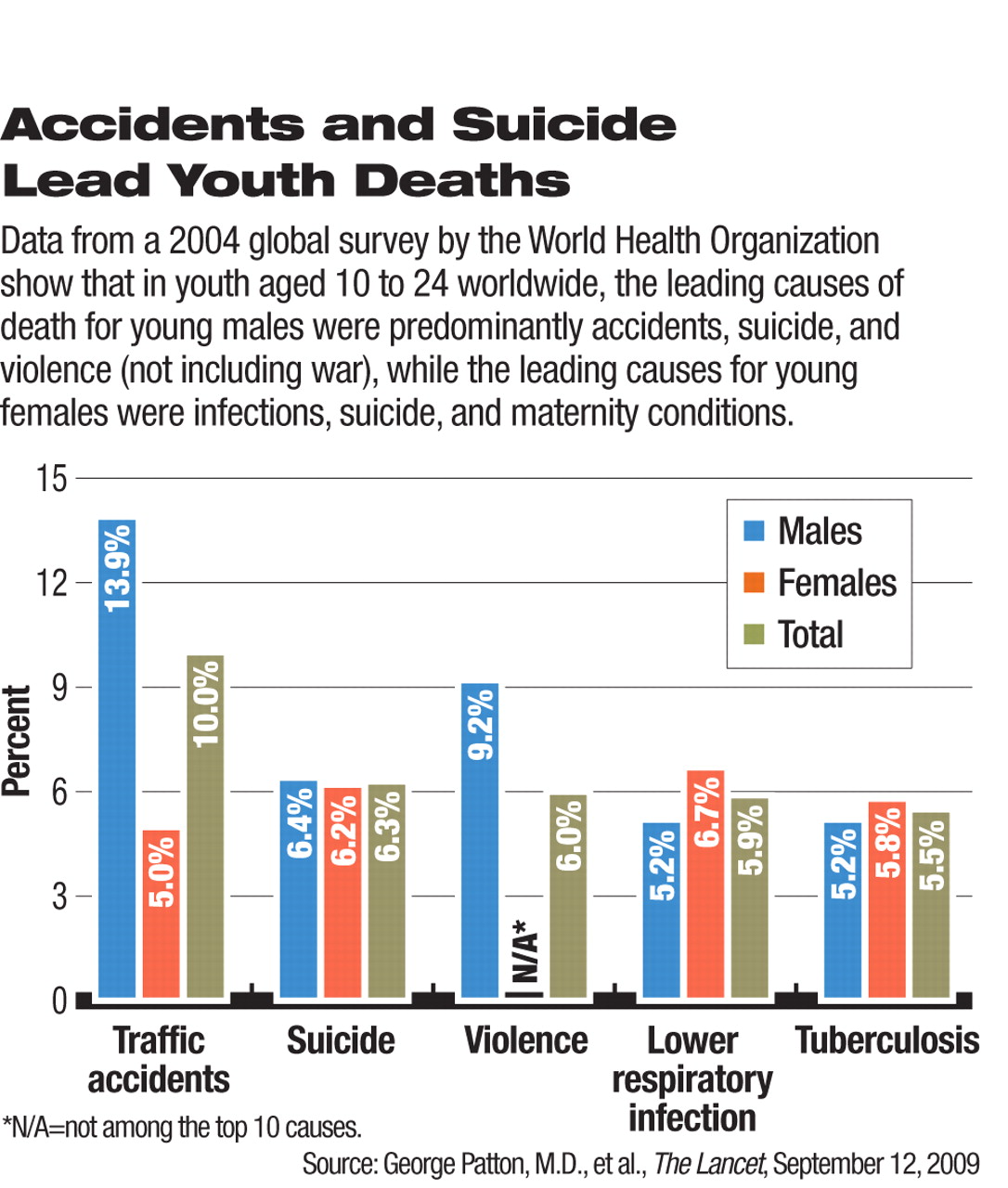A study supported by the World Health Organization (WHO) has identified the top killers of young people aged 10 to 24, including traffic accidents, suicide, violence, and infections.
A group of researchers from Australia, Switzerland, and the United Kingdom analyzed the mortality data within the 2004 WHO Global Burden of Disease Study, which had collected a large amount of public health data in low-, middle-, and high-income countries in all regions of the world.
In 2004 an estimated 2.6 million young people aged 10 to 24 died, of whom 97 percent (2.56 million) were in low- and middle-income countries. The mortality rate was 45 per 100,000 youth in high-income countries and 162 per 100,000 youth in low- and middle-income countries.
Road traffic accidents were the most common cause of death in this population, accounting for 10 percent of the total mortality. Suicide was the second most common cause of death at 6.3 percent (see chart).
The rates and patterns of youth deaths differed substantially by gender. Road traffic accidents (13.9 percent), violence not including war (9.2 percent), and suicide (6.4 percent) were the top three causes of death in males, while lower respiratory tract infection (6.7 percent), suicide (6.2 percent), and HIV/AIDS (6.1 percent) were the top three causes in females. Pregnancy-related conditions collectively contributed to 15 percent of all female deaths in this age group.
The study found that the transition between early adolescence and young adulthood is a particularly high-risk period in life, as the mortality rate jumped sharply from the 10-15 age group (95 per 100,000) to the 20-24 age group (224 per 100,000).
“Most deaths [found in the study] have behavioral causes exacerbated by national policy of failures of health-service delivery systems, or both,” wrote Robert Blum, M.D., Ph.D., a professor and chair of the Department of Population, Family, and Reproductive Health at Johns Hopkins Bloomberg School of Public Health in an accompanying editorial. He pointed out that the majority of these deaths, ranging from road accidents and suicide to HIV infection, can be reduced or prevented if effective public health policies can be widely implemented to protect young people from life-threatening adversities.
The study was published in the September 12 The Lancet.
An abstract of “Global Patterns of Mortality in Young People: A Systematic Analysis of Population Health Data” is posted at<www.thelancet.com/journals/lancet/article/PIIS0140-6736(09)60741-8/abstract>.▪

